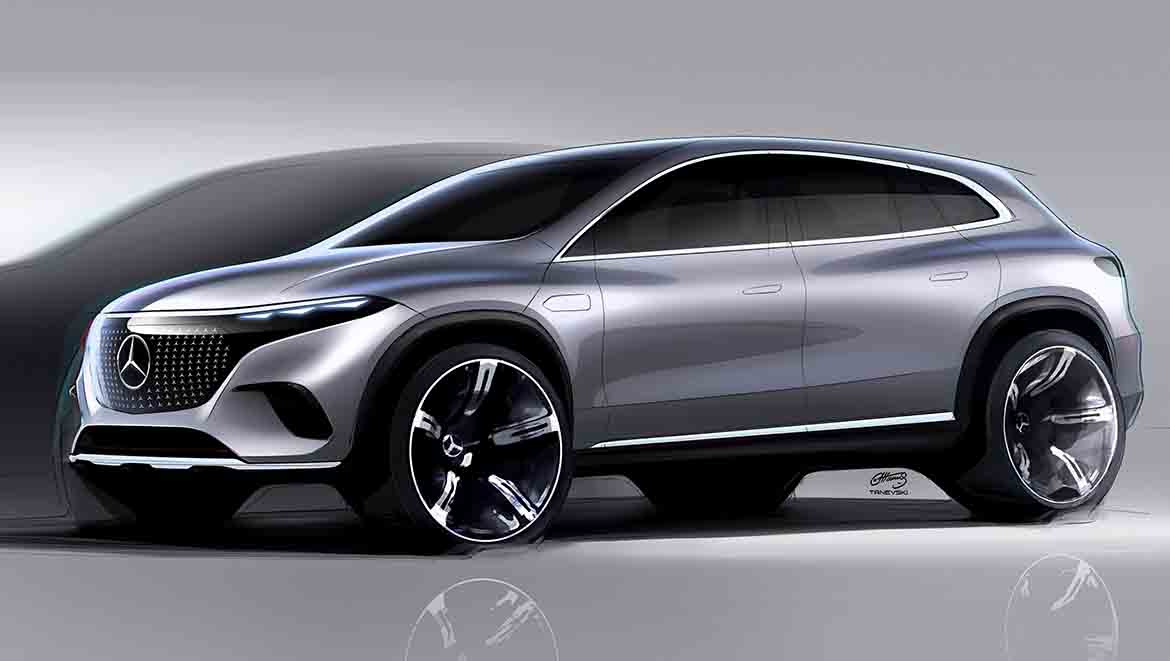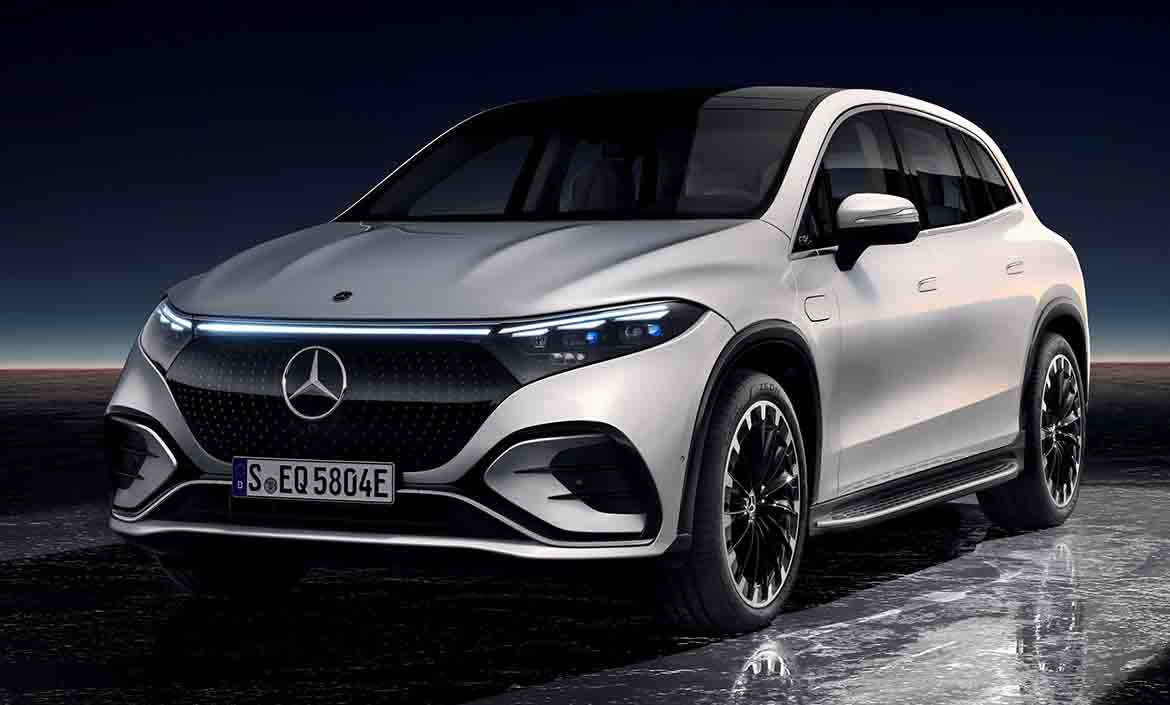“With the EQS Suv, we present our first full-electric Suv built on the new EVA platform. Its futuristic design comes from the emotional integration of shapes and surfaces and its smooth transitions reflect Mercedes style. We have thus created a modern and aerodynamic look. The futuristic and innovative proportions of this model completely redefine the meaning of luxury in a high-wheel version.” Gorden Wagener, head of design at Mercedes-Benz AG. Thus describes the EQS high-wheel, electric flagship SUV from Mercedes-Benz.
The sensual purity is reflected in the well-modeled surfaces, reduced joint lines and smooth transitions (“seamless design”). The front end forms the Black Panel unit as a whole. The headlamps joined by a light band and the radiator grille in black (Black Panel) characterize the original line. The three light points, which on the EQS Sedan form the characteristic signature of the daytime running lights, become for the EQS SUV three small triangles. Another special feature is the structured, backlit surface of the light modules: a three-dimensional hexagonal pattern that, together with the daytime running lights, makes the car instantly recognizable.
The side view of the EQS SUV is defined by a sporty silhouette that signals the car’s aerodynamic efficiency from a distance. The design line starts with a rounded front end, then soars towards the steeply raked front pillar and continues along the roofline to the rear spoiler. The exterior mirrors are mounted on the lower window moulding, a position chosen for aerodynamic and aeroacoustic reasons. The cladding on the wheel arches, typical of SUV models, is black, as is the cladding on the side members; in both cases the color contributes to making the car appear less voluminous. An optional access step is available, which also provides aerodynamic advantages and thus has a positive effect on the electric range.
The cabin offers generous spaces with exclusive and innovative upholstery. In addition to the Mbux Hyperscreen consisting of three panels of 12.3 (instrumentation), 17.7 inches (center) and 12.3 inches (passenger), the designers have focused on the systematic digitization of many other elements. One new feature is a hybrid decorative element, which combines wood with a pattern made from decorative aluminum inserts, for a modern and high-quality reinterpretation of the classic inlay technique. The shape of the door panels recalls the interior design of modern homes. The doors and their center panels extend from behind the instrument panel.















